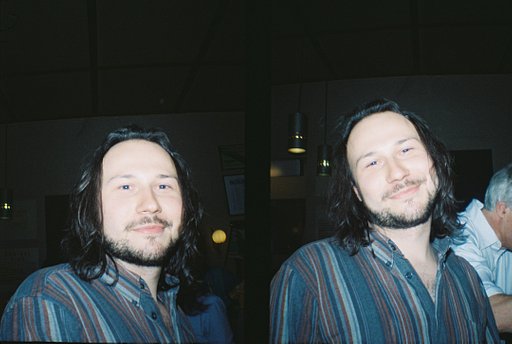What is 35 mm film?
35 mm film (sometimes also referred to as 135 format) is the most common photographic film format. The film is 35 millimetres wide, and each standard image is 24×36 mm. Individual rolls of 35 mm film are enclosed in metal canisters which allows them to be loaded in broad daylight. The end of the film is cut on one side to form a leader so that it is easy for the film to be inserted into a corresponding slot in the camera’s take-up spool.
35 mm film is the most popular format and as such a wide variety of emulsions are commercially available. At Lomography we have an exciting range of creative 35 mm film cameras as well as color negative and black and white 35 mm film for various shooting situations.

It is also possible to experiment with exposing different areas than the standard 35 mm frame. Some cameras such as the Diana Mini and Lomo LC-Wide can also shoot half-frame images (17×24 mm). Using the half frame mode, you will get 72 pictures on an ordinary roll of a 36 exposure film.
Others such as the Sprocket Rocket, HydroChrome Sutton’s Belair Panoramic and Spinner 360° cameras let you create panoramas and can expose the perforations (sprocket holes) of your 35 mm film.



Anything missing?
Can’t find an answer to your question? Or do you have some useful advice to add to one of our courses? We want to build the world’s largest analogue learning space, so please send any further requests or information to school@lomography.com and we’ll take a look!
More Courses
-
What are the different photographic film formats?
The three main types of film format are 35 mm, medium format and large format. More unusual formats also exist such as 110 and 127.
-
What is tungsten film?
Most standard films are daylight-balanced, so they tend to capture the yellow-orange cast from tungsten lights. To address this, tungsten film was created to produce color-correct images taken under artificial lighting.
-
What is 126 film?
126 film was launched by Kodak in 1963 as a way to simplify the process of loading and unloading film into cameras. Its name comes from the negatives’ dimension of 26.5 mm square. Although companies ceased mass production of 126 format around 2007 to 2008, its cartridge is still known and loved today.
-
What is APS film?
Advanced Photo System or APS film was introduced in 1996 as a “high-tech” or modern alternative to the 126 and 110 film formats. It was 24 mm wide and it introduced many innovations, like the ability to choose exposure lengths and print sizes. Production of new APS film was ceased in 2011.
-
What is the difference between panchromatic and orthochromatic film?
Orthochromatic film is made with blue-sensitive silver halide crystals, while panchromatic film adds other chemicals to increase the film’s sensitivity into the green and red parts of the spectrum.
-
What is a half-frame film camera?
Half-frame cameras shoot 18×24 mm photographs on 35 mm film. This means you can take up to 72 images on one single roll and save a lot of film!
-
What are LomoChrome films?
LomoChrome is the name given to Lomography’s experimental film stocks. There are currently four LomoChrome film stocks available: LomoChrome Purple, LomoChrome Turquoise, LomoChrome Metropolis, and LomoChrome Color ‘92.
-
Where to get film developed?
There are a lot of places that can process and develop your 35 mm color negative film such as local drugstores or one-hour photo labs.
-
What is the processing method for Redscale and LomoChrome films?
All Lomography color films are processed using C-41 chemicals. This includes Lomography RedScale XR and our popular range of color-shifting LomoChrome films – LomoChrome Purple, LomoChrome Metropolis and LomoChrome Turquoise





